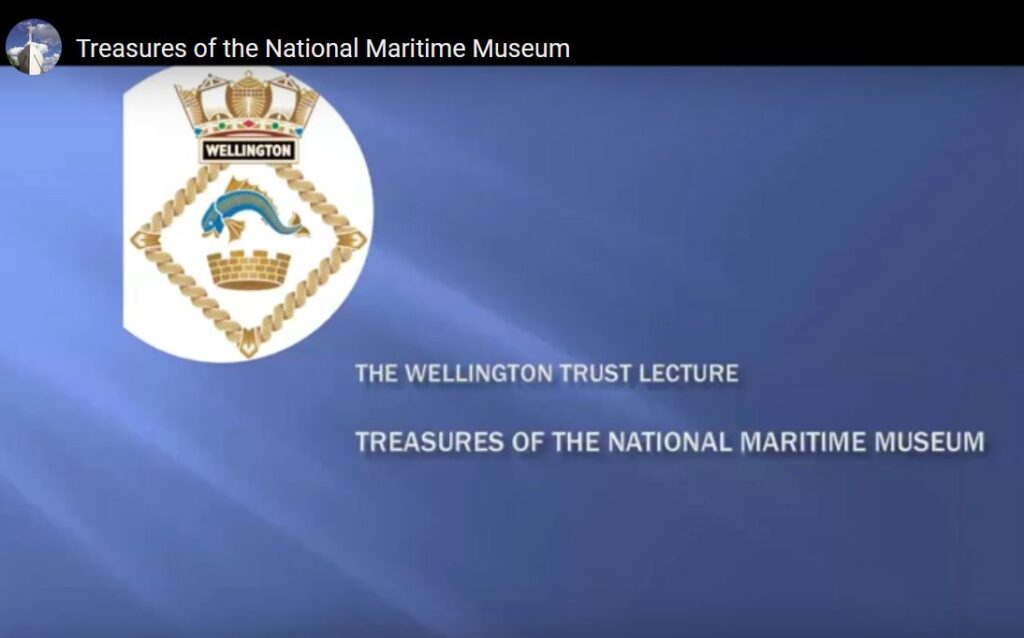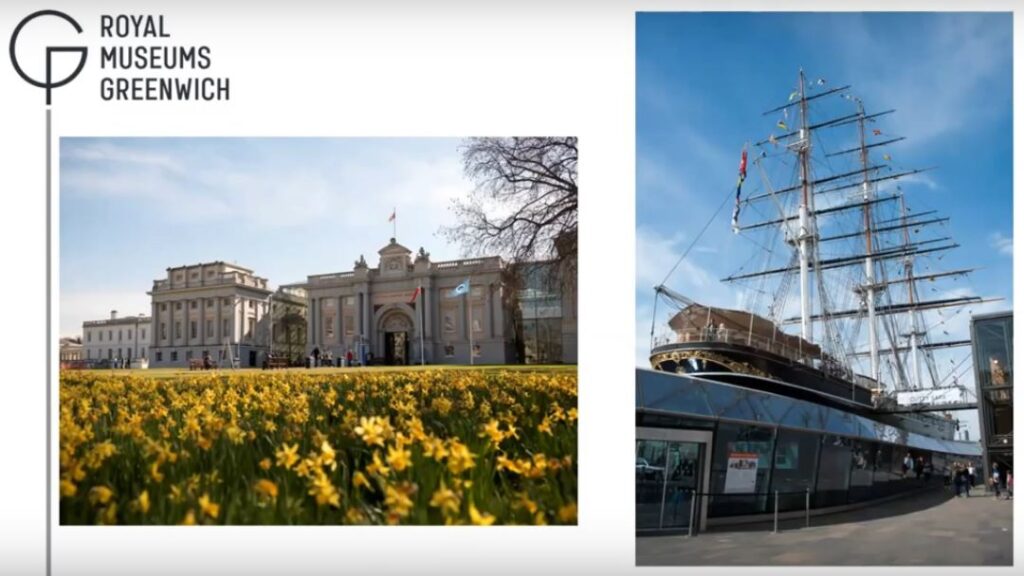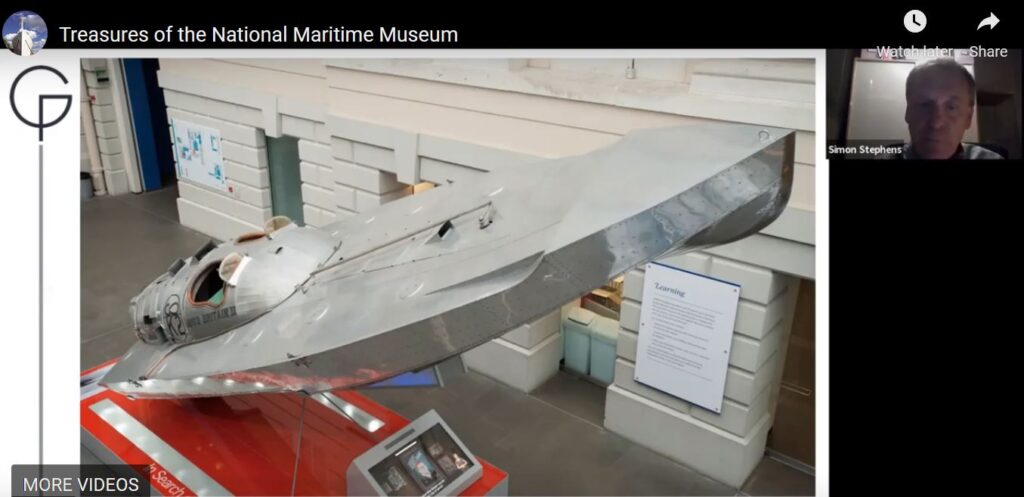


Heritage at home is an initiative set up during lockdown last year to enable people to visit museums, go on tours and find out more about heritage without leaving their own homes. In part this was to help heritage organisations survive while being closed, but it was also a way of helping peoples mental health during these very difficult times.

Recently a few members of the Society attended a lecture organised by The Wellington Trust on the Treasures of the National Maritime Museum.
Presented by Simon Stephens the Curator of the Ship Model and Boat Collections at the National Maritime Museum.
It was a fascinating talk and covered a great many items in the museums collection.
The highlights of the collection was a painting of Dazzle camouflage and the speed boatd Miss Britain III.

Dazzle camouflage was developed in World War 1 by the painter Norman Wilkinson, and was intended to confuse U-boats to such an extent the would be unable to fire torpedoes at the ships.
In order to attack a ship with a torpedo the U-boats needed information such as the ships range, heading, speed and type. The dazzle camouflage made it very difficult for a U-boat to identify the bow and other important features used to calculate the required information.
These weren’t just random patterns either, Wilkinson set up ship models on a turntable and viewed them through a mock up periscope, in light and dark conditions to test out if the direction of the model could be ascertained.
A team of female painters worked on the designs and would paint the specific pattern as an actual painting which would then be sent to the shipyards to be copied onto the ships.
Many of you may remember that the Fingal was painted in a dazzle camouflage inspired scheme for the Edinburgh Festival. The art work was called Every Woman and was done by Ciara Phillips who was commissioned by the Edinburgh Art Festival and WW1 Centenary Art Commission.

Another interesting item in the collection is the aluminium and wood speed boat Miss Britain III. Designed and built in 1933 by Hubert Scott-Paine it had a revolutionary multi stepped hydroplane hull. Although beaten by 1.5mph in the Harmsworth Trophy in September 1933 Hubert Scott-Paine & Gordon Thomas went on to become the first people to exceed 100mph in a single engine speed boat in November the same year. The following year they raised that record to 110mph and that record stood until the 1980’s.
Both the design and the bare aluminium give the Miss Britain III a very futuristic appearance.
Scott-Paine went on to design extremely successful Patrol Torpedo boats and was a major factor in the widespread use of PT boats by America.
In 1951 Scott-Paine presented Miss Britain III to the National Maritime Museum collection where it is on display.
The Wellington itself, owned by The Wellington Trust, is also a very interesting historic ship. The last surviving vessel of the Grimsby Class sloops built in the 1930’s as convoy escorts. In total 13 were built, 4 were lost to enemy action, and the other 8 being scrapped. In 1947 The Honourable Company of Master Mariners purchased the ship. In 2005 the ownership was transferred to The Wellington Trust to ensure the preservation of the ship. The Wellington remains the Head Quarters Ship of The Honourable Company of Master Mariners.
HMS Leith was part of this class serving with the Royal Navy 1933-1946. She was converted into a merchant ship in 1946 and traded until being bought by the Royal Danish Navy in 1949. She was eventually scrapped in 1955.

Share your favourite Heritage at home event in the comments section.
Or tell us about something you would like to see.
© SS Explorer Preservation Society 2021
Powered by red wine and chips
